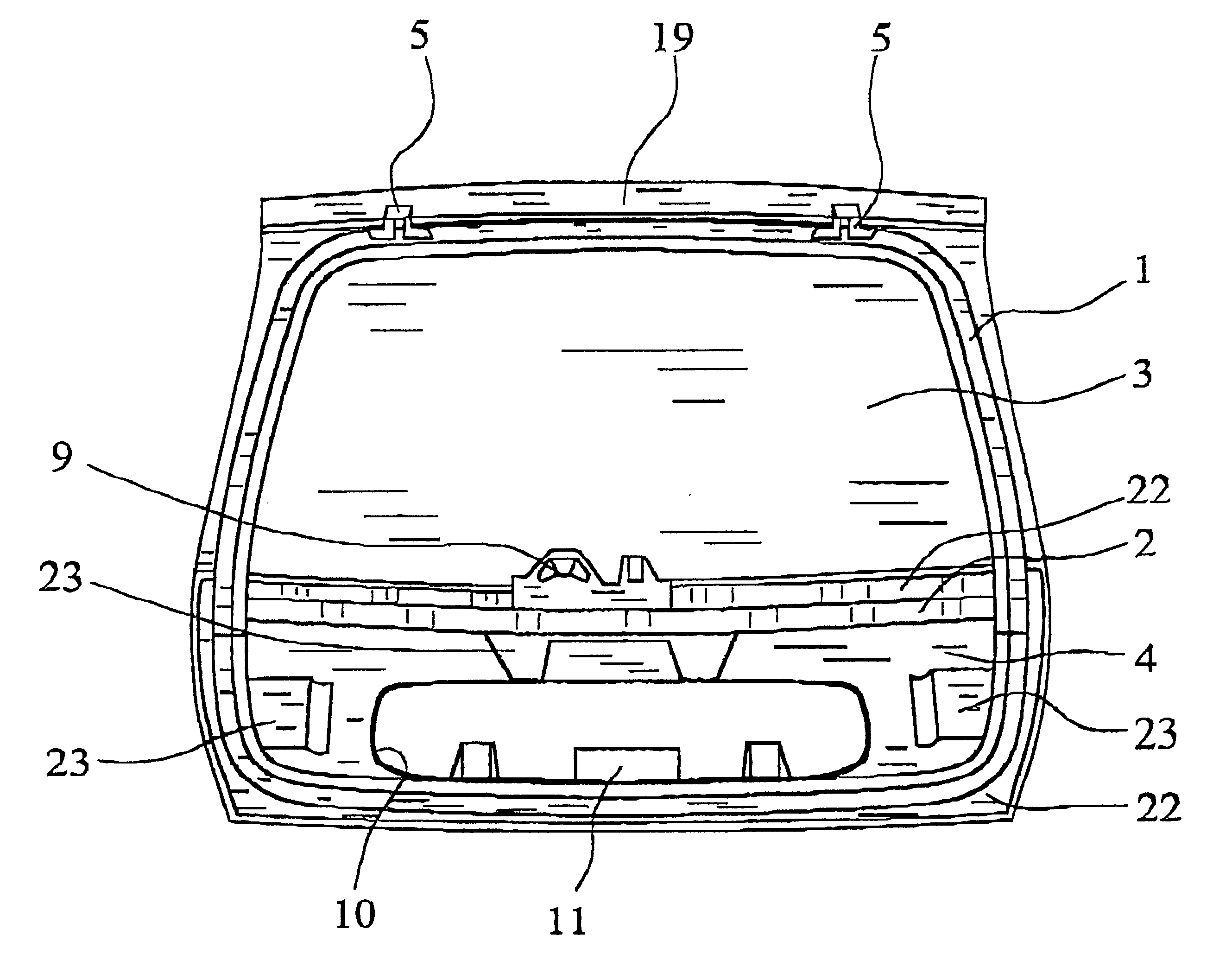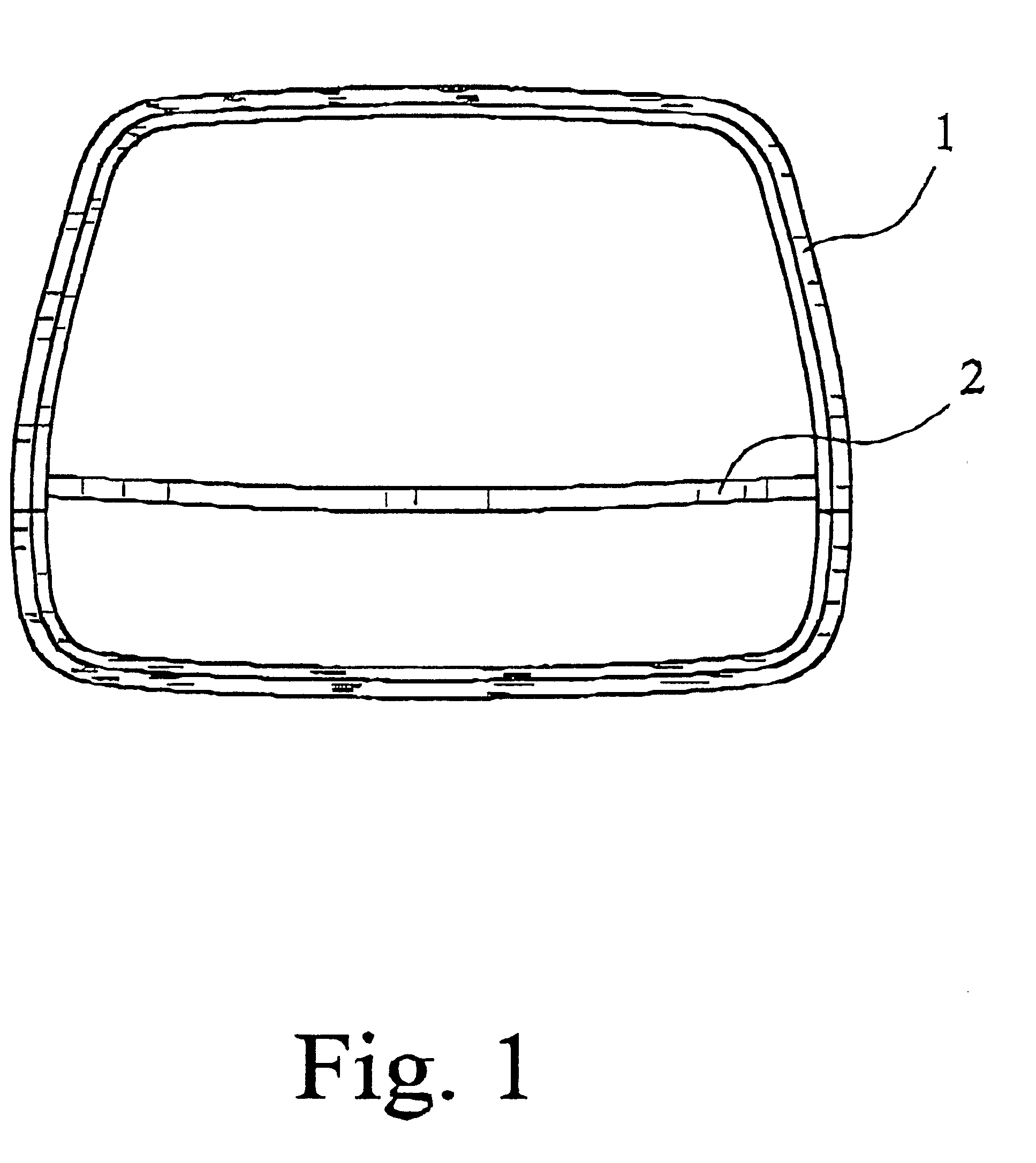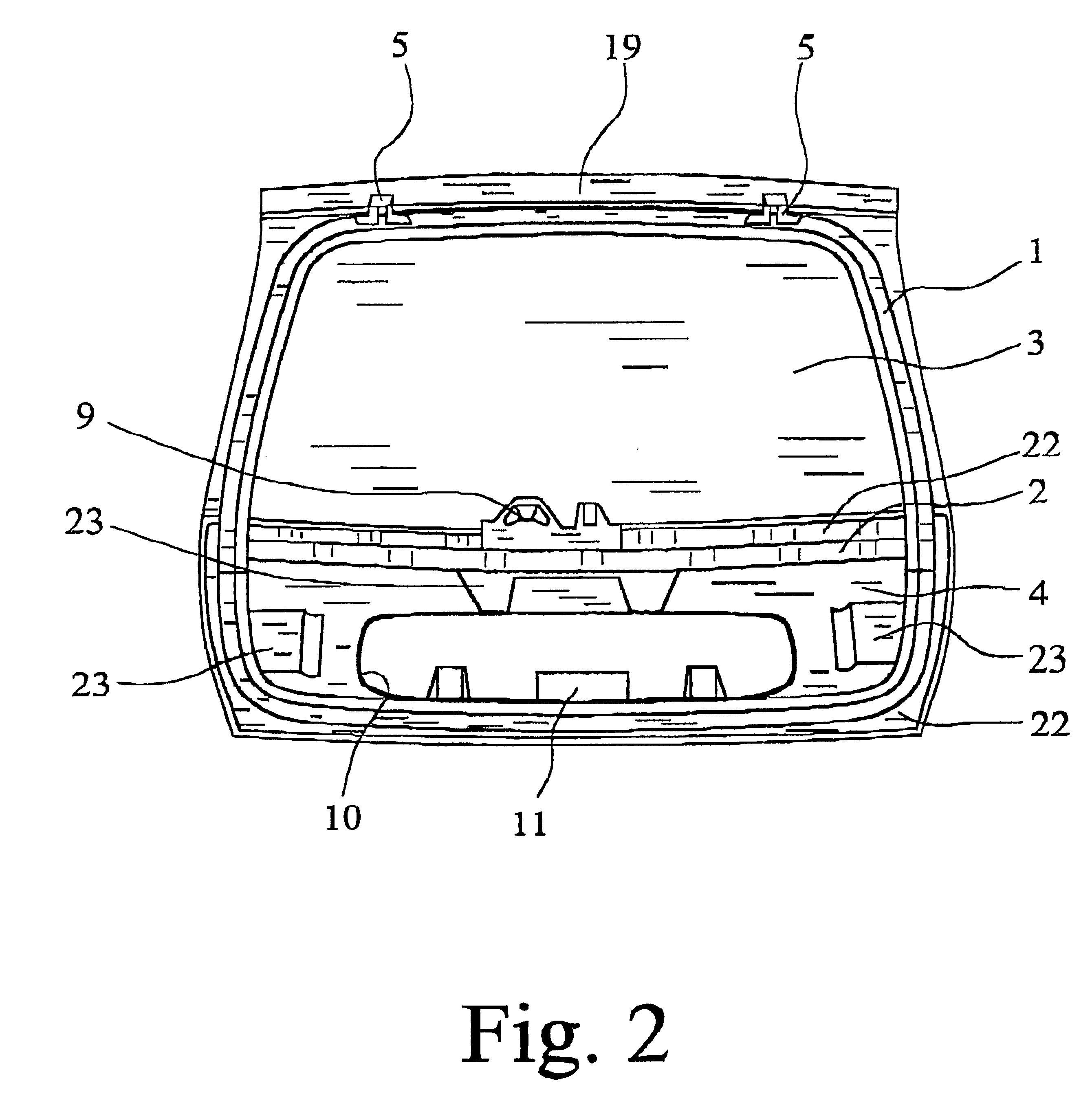Hatchback for an automobile
a hatchback and automobile technology, applied in the field of light-weight automotive hatchbacks, can solve the problems of difficult manufacturing process of assembly involving glue gluing, negative effect on vision field, and side door panels, like windshields, must be glued to the supporting fram
- Summary
- Abstract
- Description
- Claims
- Application Information
AI Technical Summary
Benefits of technology
Problems solved by technology
Method used
Image
Examples
Embodiment Construction
The object of this invention is a lightweight automotive hatchback with a supporting frame. This hatchback first has a supporting frame 1, which is designed as a metal section, in particular a hollow metal section running essentially peripherally. FIG. 1 shows this supporting frame 1.
FIG. 1 shows clearly that supporting frame 1 has an upper windshield area and a lower wall area. At the transition from the windshield area and wall area, a connecting section 2, also designed as a metal section, in particular a hollow metal section, is arranged transversely in supporting frame 1.
FIG. 2 shows the hatchback finished with add-on parts together with the supporting frame 1, now seen from the inside. This shows a windshield 3 attached to the supporting frame 1 in the windshield area. In the embodiment illustrated here, this is a stationary windshield 3 which is glued onto the supporting frame 1. An outside door panel 4 attached in the wall area can be seen on the supporting frame 1. In the w...
PUM
 Login to View More
Login to View More Abstract
Description
Claims
Application Information
 Login to View More
Login to View More - R&D
- Intellectual Property
- Life Sciences
- Materials
- Tech Scout
- Unparalleled Data Quality
- Higher Quality Content
- 60% Fewer Hallucinations
Browse by: Latest US Patents, China's latest patents, Technical Efficacy Thesaurus, Application Domain, Technology Topic, Popular Technical Reports.
© 2025 PatSnap. All rights reserved.Legal|Privacy policy|Modern Slavery Act Transparency Statement|Sitemap|About US| Contact US: help@patsnap.com



